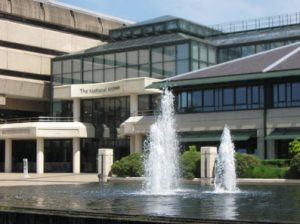 This summer, I’ve been working on an exciting project. I spent five weeks assisting Dr Steve Hewitt in his research on lone-actor terrorism in Canada, searching through archive after archive on the hunt for details of the culprits’ pasts to decipher what drove them to acts of violence. Since the research will eventually be used to help Dr Hewitt to write his book on the same topic, it felt exciting to be a small part of a much larger project (and hopefully have my name acknowledged in an academic book!).
This summer, I’ve been working on an exciting project. I spent five weeks assisting Dr Steve Hewitt in his research on lone-actor terrorism in Canada, searching through archive after archive on the hunt for details of the culprits’ pasts to decipher what drove them to acts of violence. Since the research will eventually be used to help Dr Hewitt to write his book on the same topic, it felt exciting to be a small part of a much larger project (and hopefully have my name acknowledged in an academic book!).

Some individuals were harder to research online than I anticipated, particularly those from the nineteenth century, but a visit to the National Archives at Kew provided me with some additional sources that became useful to my work. The most interesting part of the project for me, however, was finding common threads between the terrorists to posit theories as to why these incidents occurred; why ‘normal’ people can become so radicalised and desperate that they would commit an atrocity. This is something I’ve been interested in researching for years, so the chance to do it in an official way with the help of a professor was the perfect opportunity. My findings were fascinating, and meeting up regularly to discuss them with Dr Hewitt over a Starbucks refined my thoughts and kept my research on track.
Obviously, I was pretty daunted at first; delving deep into twenty men’s lives which span over a 150-year period? I’ll be honest, I didn’t know where to start. So, I began by making a list of all the information I wanted to know, and made a template similar to a Top-Trump card. I wanted to know their name, date of birth, place of birth, educational background, history of mental illness, criminal history, and many other pieces of information that could give me an insight into their motivations. Then, I set out on filling in their cards, one by one. Using all the skills I’d gained from two years of undergraduate essays under my belt, I spent hours finding newspaper articles, family history details, interviews, court records and more to find out as much as I could.
I learned to accept that as frustrating as it was to reach a dead end, or be denied access to a protected source that could be useful, ultimately, it’s all part of the process of being a historian. Once I had gained all the information I felt I could, including the additional sources I found at the National Archives which helped immensely with the nineteenth century attacks, I began to look for links between these men. What did they have in common? How did they differ? Can I pinpoint a trigger that caused them to ‘flip’ and turn to terrorism? Using my brain in this way really pushed me to think laterally and to transform the mass of information I had collected into more sophisticated ideas and theories.
While I found the project challenging at first, I loved the opportunity to properly research a topic I am extremely interested in and gained vital skills I feel will really help me as I begin my final year at Birmingham.
Julia Smith, BA History
